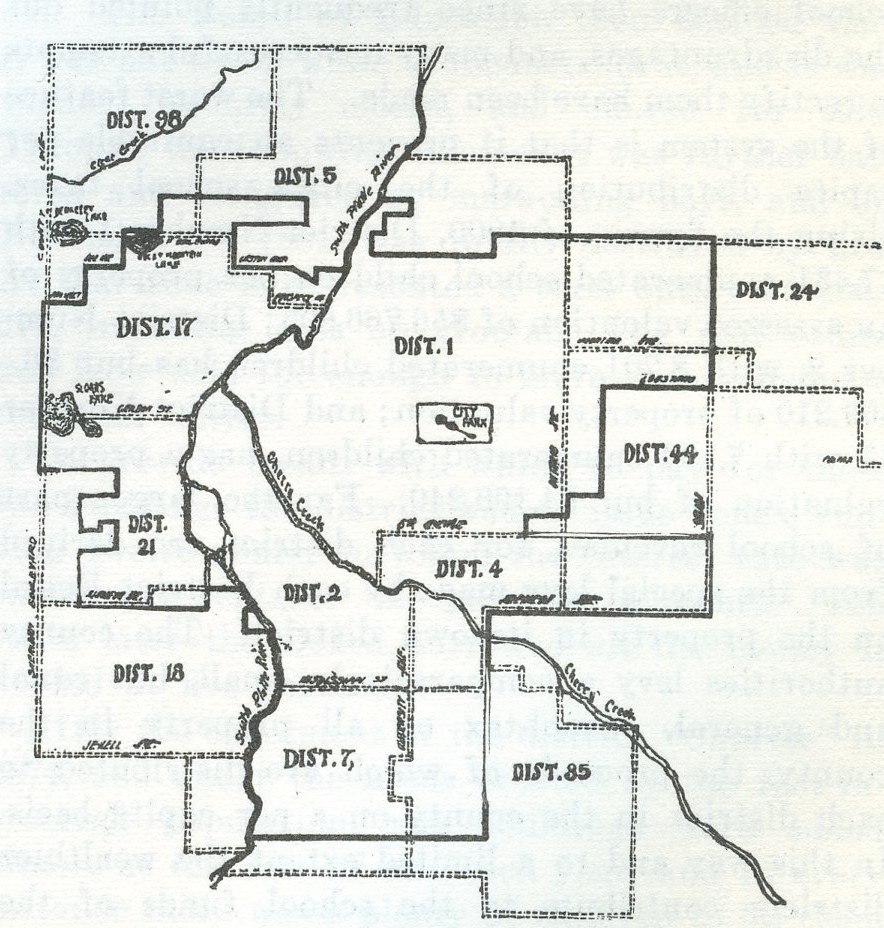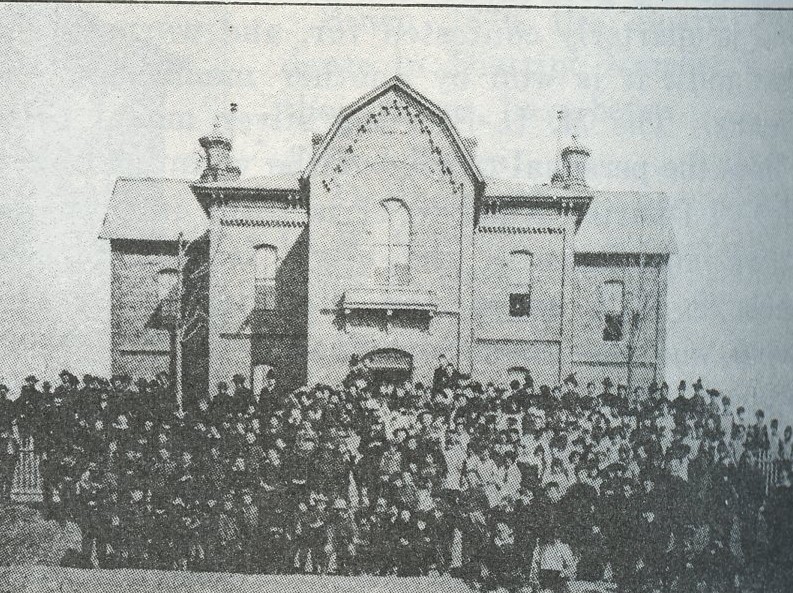By Rebecca A. Hunt
It is finally May when we see spring flowers, warmer weather and when high school seniors can see the light at the end of the tunnel.

And no, it is not a train … it is graduation! Even after four years in the big building at West Speer Boulevard and Decatur Street, many students may not know the history of the venerable structure. This month’s column will rectify that problem.
From its founding, Denver worked to provide free education for its youth. Districts 1 and 2 in Denver and Auraria spent years struggling to fund schools, with too little money and help. In 1872, school officials created District 17 in North Denver, which covered the whole northwest side. Because of tight money, the first school to go up was a tiny, one-story frame building on the southeast corner of West 15th and Central Street.
A rising number of children in the area soon swamped the tiny schoolhouse. In 1873 the school board issued bonds to build a new and much bigger school. When the bonds proved insufficient to get the project off the ground, the corporate founders of the Highland Park subdivision gave a lot on West 29th for a beautiful stone school building.
The one condition was that the land would always be used for a school. Ashland School stood on the grounds of the current North High. In the meantime, the board also built Bryant, Boulevard and Grand View schools to serve other sections of the district. In 1886 the administration began tearing down the Ashland school, and in 1888 opened the North Denver High School on the site of the current Valdez Elementary School. For the first decade the students all took elective classes, generally either preparing them for college and professional work or for work in the trades.



Initially they finished in three years, but soon the time needed to graduate rose to four years. Then in 1895, the school board created a program that combined classwork and life experience to permit some students to graduate sooner than four years. This allowed most students at that time to finish in three and a half years.
The first graduating class, in 1886, was six female students. Graduates rose to 48 in 1899. As the Northside population grew, the district added more elementary schools and expanded the high school. One cause of growth was the expansion of the streetcar system that made getting around much easier.
The system had a stop outside of the West 32nd Avenue side of the building, and another streetcar ran on Federal Boulevard. The “old” Beaux Arts central section of the modern North opened in 1911 with a 1913 addition to the west housing home economics and shop classes.
The district removed the word Denver, creating the current name of North High School. Further building additions came in 1957 (the east physical education wing), 1980-83 (the auditorium, cafeteria, atrium, classrooms and offices), and a major remodeling in 2010-11 of the 1911 structure.
North has had quite a few famous alumni. Big-band musician Paul Whiteman attended North as did Golda Meir, who was the first woman prime minister of Israel.
Burnham Hoyt, who designed the Red Rocks Amphitheater, graduated in 1904. Numerous artists, musicians and businesspeople also called North their academic home. For those who want to learn more about North High School, there is an excellent history room in the school, maintained by the alumni association.
More information on the school’s history can be found by clicking here and here.
So, to the class of 2023, good luck in wherever life takes you. And never forget your academic mother, North High School. Go Vikings!
Dr. Rebecca A. Hunt has been a Denver resident since 1985. She worked in museums and then taught Colorado, Denver and immigration history at the University of Colorado Denver until she retired in 2020.

Be the first to comment